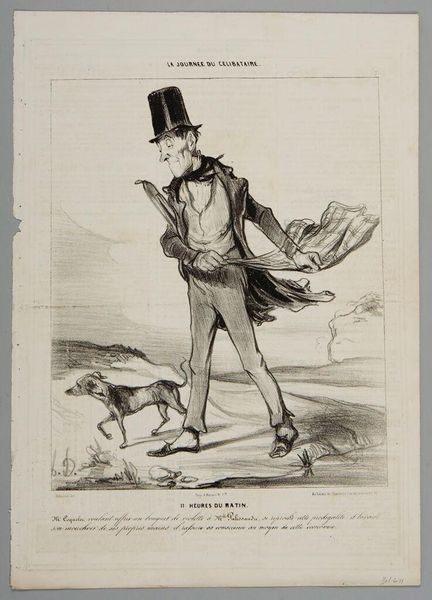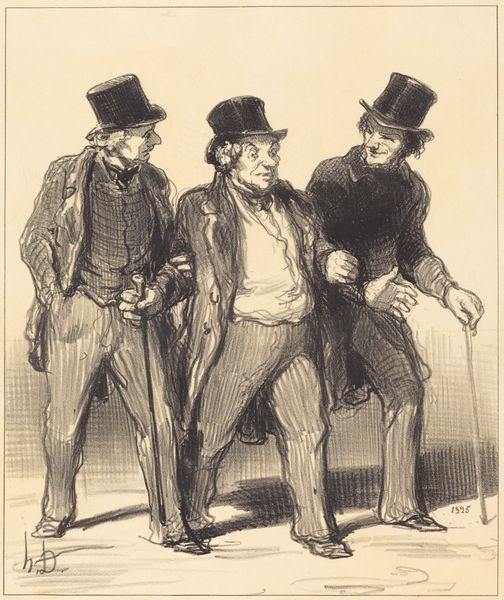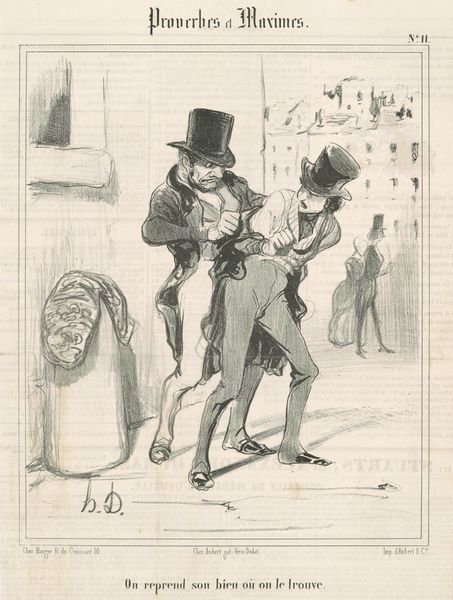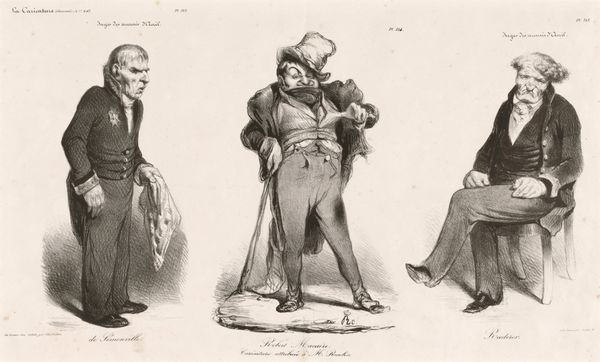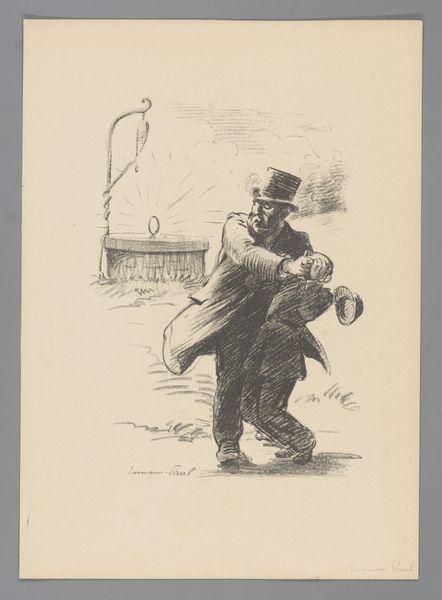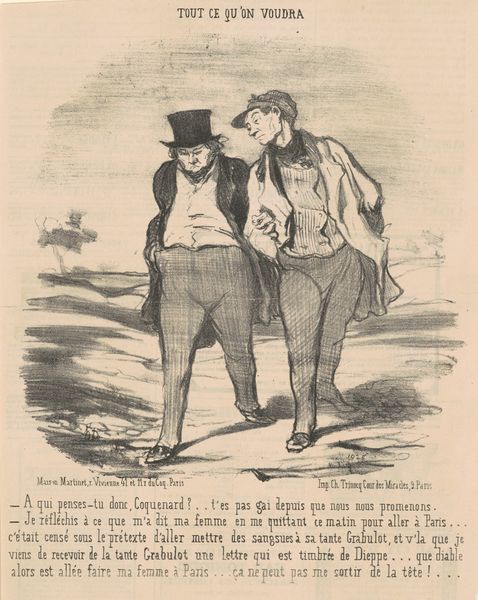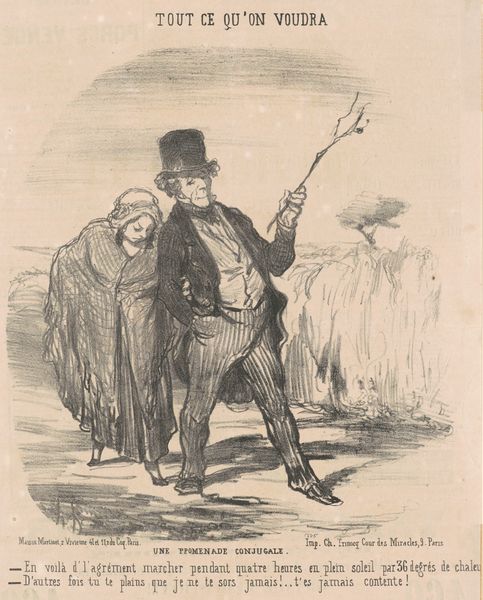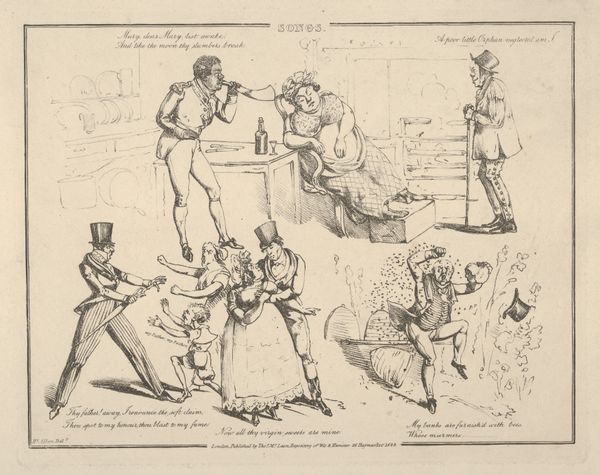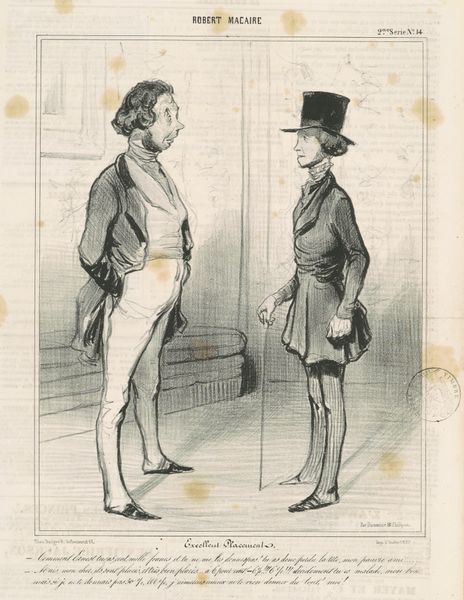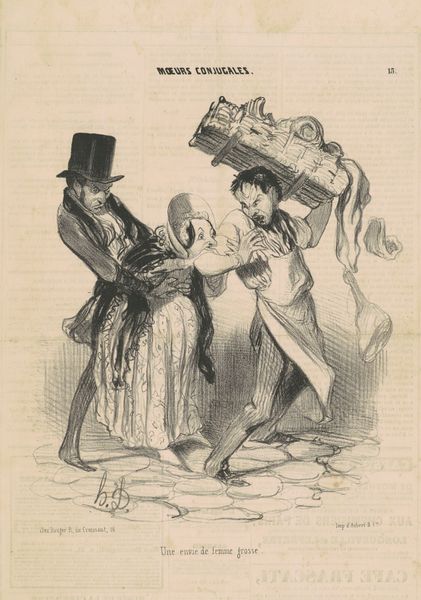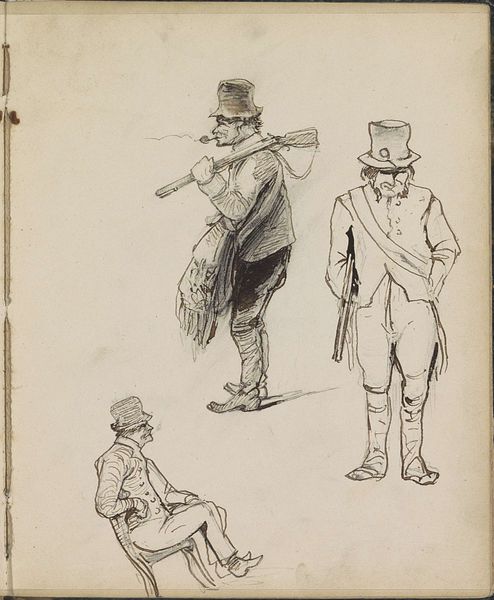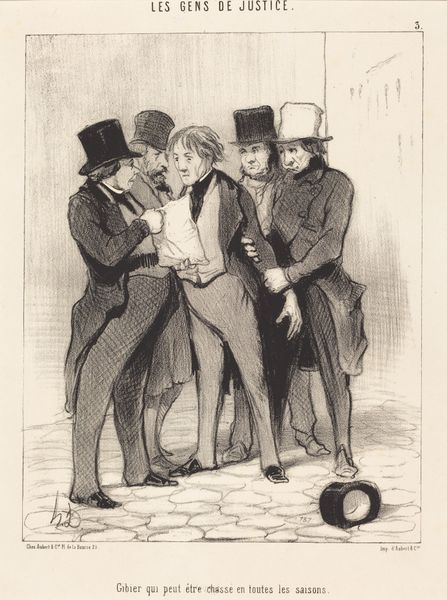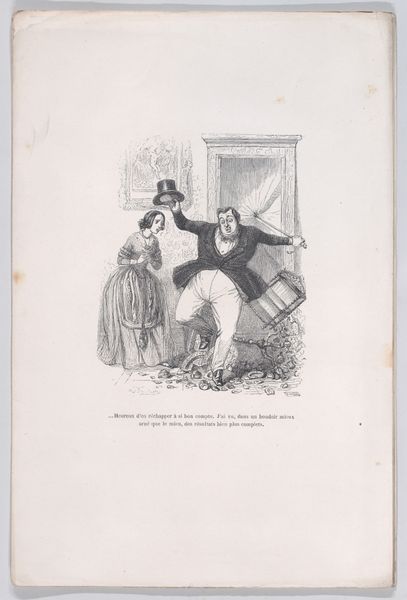
Spotprent op het onderzoek naar paalwormen door Prof. W. Vrolik, 1860 1860
0:00
0:00
drawing, pencil
#
portrait
#
drawing
#
imaginative character sketch
#
light pencil work
#
quirky sketch
#
caricature
#
pencil sketch
#
personal sketchbook
#
idea generation sketch
#
sketchwork
#
pencil
#
sketchbook drawing
#
storyboard and sketchbook work
#
sketchbook art
#
realism
Dimensions: height 215 mm, width 275 mm
Copyright: Rijks Museum: Open Domain
Curator: This is a caricature by Johan Michaël Schmidt Crans titled "Spotprent op het onderzoek naar paalwormen door Prof. W. Vrolik," created in 1860 using pencil. The sketch seems to depict Professor Vrolik, the marine biologist, reacting to his discovery of the shipworm’s destructive nature. It is amusing, but what are your initial thoughts on its deeper context? Editor: It strikes me as quite critical. The professor seems horrified on one side, almost unbothered on the other. Was there a broader cultural anxiety surrounding scientific discovery at the time? Curator: Exactly! This caricature speaks volumes about the tension between scientific progress and its potential societal impact. Consider the context: 1860, a time of burgeoning industrialization in the Netherlands, heavily reliant on wooden structures vulnerable to shipworms. Now, look at the visual juxtaposition. What could that calm, almost aloof figure on the left represent, juxtaposed with the frantic one on the right? Editor: Perhaps the first represents the scientific establishment, comfortably detached, while the second is the professor facing the alarming implications of his findings. It could also be before and after? Curator: Precisely! It critiques the perceived distance between scientific research and its real-world consequences. The inscription discusses shipworms, but it alludes to something bigger, that research comes with certain consequences to public knowledge and ways of life. Are certain findings more suited to specific timelines than others? Editor: So the artwork highlights the scientist’s possible moral dilemma, caught between discovery and societal disruption, which connects it to broader themes of social responsibility and ethical implications of research, particularly in the context of a changing world. The rapid advancements and destruction. Curator: It’s fascinating how a simple pencil sketch can unravel such complex historical anxieties about progress and responsibility. Editor: I've certainly learned to appreciate the work on a deeper level now. The sketch highlights themes around responsibility, science, progress, and the relationship between the individual and broader structural change.
Comments
No comments
Be the first to comment and join the conversation on the ultimate creative platform.
